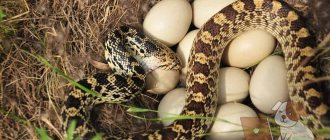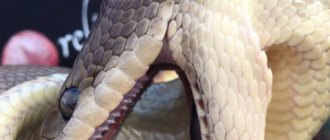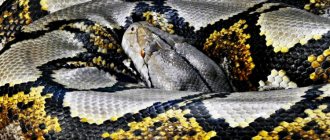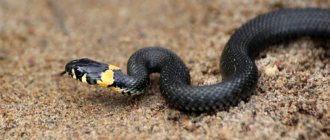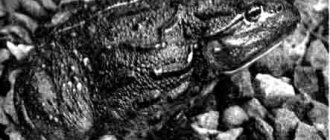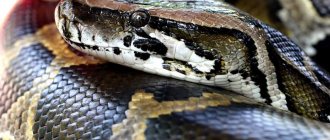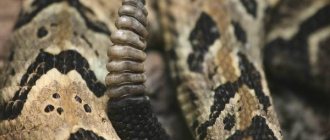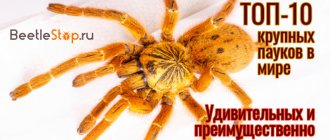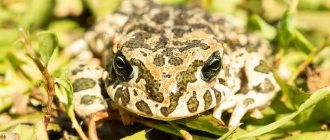- Exotic pets
| Data left by users (City, cost) | |
| Vinnytsia | 1000 |
| Moscow | 5000 |
| Tosno | 1000 |
| Makeevka | 3000 |
Today, the royal python is one of the most popular snakes for lovers of exotic pets. Under natural conditions, this species of snake lives in western Africa. Its favorite habitat is savannas and open forests near water, in which snakes escape the heat, but they still spend most of their time in burrows. The royal python is active in the evening and at night, which is when it hunts birds, lizards, and small mammals.
In captivity, with good care, royal pythons feel quite comfortable, they are not very picky. They can bite, but this is rather a rarity than a common occurrence, since this form of protection is resorted to only in emergency cases, usually they curl up into a tight ball - a ball, for which the royal python is also called the “ball python”. Life expectancy: in the wild - 10 years, at home they live up to 20-30 years. Puberty is at the age of 3-5 years.
Benefits of content:
- one of the smallest pythons in size;
- has a beautiful color;
- unpretentious in content;
- non-aggressive, peaceful.
Disadvantages of content:
- Pythons are predominantly nocturnal animals, so they spend most of the day in shelters.
Description
The royal python has a muscular body, its diameter is from 10 to 15 cm, there is a rather large triangle-shaped spot on the head, there are lateral oculotemporal stripes, and a yellow stripe is located between them. The color is dominated by black, beige and yellow, the stripes can be varied and run on the sides. Thanks to its bright, unusual coloring, this type of python got its name - royal.
Like many snakes, the royal python has a long, branched tongue. Females differ from males in size; they are slightly longer - from 1.2 to 1.8 m, and males - 1 m. Pythons grow quickly, in the first three years of life they increase 30 cm annually.
Classification
The species forms three subspecies:
- Broghammerus reticulatus reticulatus
- The nominative subspecies, which is the largest and most widespread. Around the middle of the body there are 68-78 scales, ventral scutes 304-325. The range of this subspecies covers Bangladesh, Myanmar, Thailand, Nicobar Islands, Cambodia, Laos, Vietnam, Malaysia, Singapore, Brunei, Indonesia (Anambas, Sumatra, Simelue, Nias Islands, Batu Islands, Mentawai Islands, Engano, Banka, Belitung, Kalimantan , Bunguran Islands (Natuna), Krakatoa, Java, Bali, Lombok, Sumbawa, Sumba, Flores, Timor, Bobar Islands, Tanimbar Islands, Sulawesi, Butung, Sula Islands, Buru, Ambon, Seram, Obi Islands, Halmahera, Ternate, etc. .), Philippines. Absent from New Guinea. - Broghammerus reticulatus saputrai
- Around the middle of the body there are 77-81 scales, ventral scutes 330-334. It lives in Indonesia in the southwest of Sulawesi and Salayar Island. - Broghammerus reticulatus jampeanus
is a dwarf island subspecies, with adults reaching 2–2.5 m in length. Around the middle of the body there are 64-68 scales, ventral scutes 290-301. Differs in dull color. Lives on the island of Tanahjampea, Indonesia.
Habitat in the wild
The zone of the main mass distribution of the royal python extends from the western territories of the continent to central Africa. Pythons live in open forest areas and in shrouds, next to large enough bodies of water in which the reptiles can cool off on too hot days.
Pythons spend a significant part of the day in burrows, and their most active hours are at dawn and dusk.
Royal python morphs
In captivity, through long-term selection work, numerous interesting morphological changes in the coloration of the reptile's skin, which were the result of various genetic mutations, were obtained and fixed.
This is interesting! The most popular morphs in home keeping are “albino”, “orange ghost”, “spider” and “woma”, as well as “platinum morphism”.
Today, “morphs” with different colors and unusual patterns are very well known, as well as individuals that are almost completely devoid of integumentary scales, which gives the reptile a very original appearance.
- How much does a raccoon cost?
- Interesting facts about cats
- Cute dog breeds
- The richest animals
- Cat claw attachments
- Dog
Appearance
Competes with the anaconda for the title of the largest snake in the world. In one of the Japanese zoos there lives a python whose length is more than 12 meters, but individuals living in nature are smaller and their length does not exceed 10 meters. Along the back there are light brown round-rhombic spots, bounded on the sides of the body by a dark brown jagged stripe of connected triangular spots with small light fields in the middle. A thin black stripe runs from the eye to the corner of the mouth. The skin has a strong iridescent tint. The coloring and body pattern are very variable. The four upper labial scutes have heat-sensitive pits, which means that the snake can find prey even at night, focusing on the difference in temperature between the environment and the victim’s body. Pythons have a vertical pupil, and the head is clearly differentiated from the neck. On the sides of the anal shield there are noticeable processes - rudiments of the hind limbs.
Content
The royal python is one of those that is quite easy to keep; caring for it will not be difficult for you. They need a spacious glass or plastic terrarium; at a young age (until they grow to 90 cm) they can be kept in a 35-liter terrarium, and then, when they grow up, it is worth increasing their place of residence. The perimeter of their “apartment” must be at least twice the length of the residents, so that there is room to turn around.
A mandatory condition for keeping this snake at home is the presence of a lid on the terrarium; you don’t want your pet to go for a walk around the room. In addition, the lid must have holes to provide ventilation. For bedding, you can use paper towels, newspaper, artificial substrate, but sawdust is definitely not suitable for this purpose.
Since in nature the royal python likes to hide, but in captivity you need to create such secluded places for it. The optimal temperature for a python’s life is 25-29 °C during the day, and at night – 20-23 °C. Heating mats or cords can be used for heating. During the day it is necessary to use additional lighting; the lamps are best placed at the top of the terrarium. To bathe your pet, you need to make a small pond in his home; make sure that the water in it is always clean.
Important! The minimum dimensions of a terrarium for baby pythons can be approximately 40x25x10 cm, and for adult royal pythons, the “dwelling” cannot be less than 60x40x20 cm.
The optimal bedding would be cypress mulch, as well as paper towels or an artificial substrate option. Do not use wood shavings or sawdust . It is very important to arrange a significant number of secret corners inside the terrariums under driftwood, branches or relatively large, but not sharp shards, where the reptile will hide throughout the daylight hours.
Important! A spacious and very stable pond with a water temperature of 22.0-26.0 ° C should be created in the terrarium for bathing the reptile. Water must be replaced daily.
During the day, fluorescent lamps with a power of 60-75 W, located in the upper part of the terrarium, are used for lighting. It is necessary to maintain a certain daylight hours, which is approximately twelve hours. In summer, daylight hours can be increased by a couple of hours. It is not recommended to spray water from household spray bottles in the presence of an artificial reservoir. High humidity often causes many diseases in the royal python.
Where does the rainbow boa live?
Photo: Rainbow boa in Brazil
Rainbow boas have spread widely throughout both Central and South America. Boas inhabit tropical, humid, forest areas, and basins of large rivers (Orinoco, Amazon). They prefer to settle in places close to water sources. Almost all varieties of rainbow boa are very widespread in the wild. The distribution area depends on one or another subspecies.
The Colombian rainbow boa has chosen Panama, the north of the South American continent and Costa Rica. It is found in small quantities on the islands of Trinidad and Tobago, Margarita, and in the coastal zone of Guiana. This species prefers dry forest areas located next to savannas.
It is not difficult to guess that the South American aboma has registered and spread widely throughout South America. This boa constrictor lives both in humid areas of the tropics and in savannas and forests with a dry climate. The Paraguayan boa constrictor can be found not only in the vastness of Paraguay, but also in the wetlands of Argentina and Brazil. The Argentine species of boas has spread throughout the territories of Argentina, Bolivia and lives in the foothills of the Andes.
Nine subspecies of Aboma live in India. Most reptiles have been spotted in the Bahamas and Haiti. The Cuban species of rainbow boa is registered in Cuba. Boas have also chosen Jamaica, Puerto Rico and the Virgin and Antilles Islands.
Aboma can live in territories with completely different landscapes, inhabited by:
- in tropical forests;
- on dunes overgrown with dense bushes;
- in wetlands;
- open mountain prairies;
- savannahs;
- semi-desert areas.
The diverse habitats of reptiles indicate that rainbow boas are ecologically very plastic and can adapt to different surrounding areas.
Now you know where the rainbow boa constrictor (aboma) lives. Let's see what he eats.
Seasonal and daily rhythms
The duration of daylight hours and the operation of daytime heating during the period of animal activity is 12 hours. Irradiation with UV lamps with UVB 4-7% during daylight hours; such lamps can perform both lighting and irradiation functions. For irradiation, you can also use erythema lamps - 15 minutes 3 times a day.
In the absence of the above lamps, you can irradiate with household appliances such as UV for 1 to 5 minutes during the week, from a distance of 50 cm - once a month. When irradiated with erythema lamps and devices such as ultraviolet radiation, the animal must be in dry conditions. In summer, at temperatures not lower than 25°C, animals can be taken to a sunny place protected from the wind. It is practically possible not to adhere to seasonal rhythms for young animals, but for adult pythons, in preparation for reproduction, the following is necessary. In August, over the course of two to three weeks, daylight hours and the duration of daytime heating are gradually reduced; with an 8-hour day, the snakes are stopped feeding, the pond is removed, and the night heating is turned off. Then, with 4 hours of daylight, the daytime heating is turned off, and then, after a couple of days, the lighting is turned off.
The temperature during the cooling period should be at 20-23°C. To maintain humidity, the terrarium is sprayed in one corner every two days. Periodically place a drinking bowl in the terrarium. The duration of the cooling period is 1-2 months, if the animal is in normal condition. Snakes are brought out of wintering in the same rhythm in which they were put down, gradually increasing the daylight and heat. With an 8-hour day, they turn on the night heating and offer food to the pythons.
December
12/22/2018 - one mouse
Python is about a year old. With this I finish writing such a detailed diary. I think that this was the most interesting thing - how the python eats, molts, and poops when you just took it home when it was very small. It’s already easier with teenagers, and by this time you will already know the habits and characteristics of your pet.
——-~55 centimeters 02/22/2018 - live mouse (7 days) 02/26/2018 - pooped 03/27/2018 - molting 03/31/2018 - live runner (37 days) 04/07/2018 - live mouse (7 days) 04/16/2018 - live mouse (9 days) 04/20/2018 - live mouse (4 days) 04/23/2018 - pooped (56 days) 04/29/2018 - live mouse (9 days) 05/05/2018 - pooped (12 days) 05/07/2018 - live mouse ( 8 days) 05/12 - live mouse (5 days) 05/20/2018 - molting (54 days), pooped (15 days), live mouse (8 days). ~67-68 centimeters. (3 months growth ~15 centimeters) 05/24/2018 - live mouse (4 days) 06/04/2018 - pooped (15 days) 06/18/2018 - runner (25 days) 06/20/2018 - runner (2 days) 06/25/2018 - adult mouse (5 days) 06/27/2018 - runner (2 days) 07/07/2018 - molting (48 days), pooped (33 days), ~78 centimeters. 07/08/2018 - adult mouse (11 days). 07/12/2018 - adult mouse (4 days) 07/17/2018 - adult mouse (5 days) 07/21/2018 - pooped (14 days). Weight 373 grams. 07/24/2018 - adult mouse (7 days) 07/30/2018 - young (the size of an adult mouse) Djungarian hamster (6 days) 08/06/2018 - adult mouse (7 days) 08/10/18 - adult mouse (4 days ) 08/13/18 - adult mouse (3 days) 08/16/2018 - pooped (26 days). 08/23/18 - adult mouse (10 days) 09/03/2018 - molting (58 days), pooped (18 days), live mouse (11 days) 09/06/2018 - mouse (3 days) 09/21/2018 - two mice (15 days ) 10.10.2018 - jungarik (19 days) 15.10.2018 - one mouse (5 days) 30.10.2018 - one mouse (4 days) 3.11.2018 - molting (61 days), pooped 4.11.2018 - one mouse (1 day ) 12/22/2018 - one mouse (48 days) ~90 centimeters
Share with others
Feeding the pythons
Royal pythons are carnivores; in captivity, young pythons eat small mice; adult snakes feed on mice, rats, hamsters, chickens or quails. Food must be killed and frozen. Before feeding, food is thawed. Avoid feeding live food, as it can cause serious injury to snakes, and rodents can also become infected with various diseases.
The frequency of feeding a python depends on its age, temperature, size of prey and activity of the snake. Young snakes eat 1-2 times a week, adults can eat once every 1-2 weeks. In winter, if the temperature is low, the snake eats even less or refuses to eat at all for several weeks. Pregnant females do not feed until they lay eggs. Snakes that shed do not eat at all. Royal pythons are prone to obesity. Pythons are fed in the evening or at dusk.
If your python has not eaten for more than 1-4 months, carefully monitor its weight. If the royal python has lost too much weight, you have to force feed it, or try placing the snake in a small space and putting a live mouse in there (not a baby mouse, but already a little independent, which cannot harm the snake). The mouse will run around the snake and irritate it. In most cases, reptiles eat the food offered. If the python continues to refuse food, check its mouth to see if it has stomatitis.
What to feed?
It is necessary to feed a snake of any age once every 7-10 days; more frequent attempts to feed the python will only irritate it. Sometimes reptiles can go without food for six months or longer.
As a rule, royal pythons prefer to eat living creatures: rats, mice, rabbits, birds. You should buy animals to feed your snake from trusted pet stores, because animals bought at poultry markets may be sick. However, snakes that are kept in captivity from birth can learn to eat defrosted meat. At one time, an adult can eat from 400 to 800 grams of food.
Remember, with good care and education, a ball python can live in captivity for more than 50 years and become a friend to the whole family no worse than ordinary dogs or cats.
House snake diseases, prevention
Big problems can arise if a pet python does not eat for more than one month . In this case, you need to strictly control the reptile’s weight, and if it decreases significantly, force feed the pet. As a rule, pythons refuse to eat for a long time due to stomatitis, the presence of which can be determined by a careful examination of the reptile’s mouth.
In addition to stomatitis, the royal python is susceptible to the following diseases:
- dystocia is a disease associated with a violation of the oviposition process, and accompanied by the stoppage of the egg in the genital tract;
- exhaustion of various origins and severity;
- prolapse of organs from the cloaca;
- disekdis;
- acute or chronic respiratory syndrome;
- Cryptosporidiosis is a protozoal disease accompanied by significant depletion of the reptile.
Compliance with maintenance rules and timely prevention can minimize the risk of royal python diseases and also prevent the development of severe complications.
Possible dangers
Fear of snakes has a lot to do with stereotypes, from which animals sometimes suffer greatly. Nevertheless, there is a certain danger when keeping a python, although this statement is quite true for any other animal in the house. First of all, you should not wrap your python around your neck. Snakes have very strongly developed instincts, and such actions can lead to the animal beginning to wrap itself even tighter and strangle.
Snakes are slow, but this slowness is deceptive - sudden movements or jumping can frighten, especially small children.
Python can bite. And even though their bites are not poisonous, they are still painful and unpleasant. It is advisable to play with a python with clean hands, without foreign odors, especially the smell of meat.
Breeding pythons
Pythons of the central genus mate in late autumn - early winter. 20-30 days before this, the snakes are seated and kept at lower temperatures (18-20 C) and shorter daylight hours individually. Most pythons in captivity incubate the clutch themselves, otherwise it can be successfully incubated artificially at a temperature of 28-32 C and 100% air humidity.
7-10 days after birth, young pythons molt and begin to feed on small mice. Pythons reach sexual maturity at different ages. Thus, it is known to produce offspring from a female dark tiger python (Python molurus bivittatus) at the age of only 18 months, although this is usually 3.5-4 years. Large pythons reach maturity later - the youngest female reticulated python that gave birth in captivity was 5.5 years old, the hieroglyphic python was 6 years old.
How to choose?
It is best to get a python from a breeder. Reptiles that were born in captivity have no problems with adaptation and acclimatization. In addition, snakes captured in Africa may be sick, injured, or have parasites.
For those who are getting a python for the first time, the best option is to buy a baby that has recently hatched. The baby snake must be able to feed on its own, be at least 40 centimeters long, have shiny skin and developed muscles.
You should start looking for a pet in May, since the mass birth of cubs on snake farms occurs in late spring.
Royal python price
Today, the royal python supply market is slightly behind the demand for this unusually beautiful and unpretentious reptile.
Cost varies depending on the rarity, gender and age of the morph:
- female royal python of the Calico morph, weighing 990 g. – 15 thousand rubles;
- female royal python of the Spider morph, weighing 1680 g. – 13 thousand rubles.
The price for males is usually about 5-10% lower than for females. Responsible breeders will always advise buyers on maintenance issues and also provide information support, which allows inexperienced lovers of exotic reptiles to avoid serious mistakes.
Which is better - frozen food or live food?
If you ask a royal python what is best for him, he will definitely answer that live food. Freshly killed food is soft, but frozen food is numb. Naturally, the softer the food, the easier it is for the python to swallow it.
If you ask those who keep pythons, opinions differ, since there are pros and cons to each method.
Advantages of frozen food: - you can stock up on food for future use; - no need to keep rodents. Disadvantages of frozen food: - most likely it is stress for the python; — not everyone will agree to see dead rodents in the freezer next to dumplings (in the jargon, frozen mice, by the way, are called dumplings); — expensive, because in cases where you did not guess the feeding time correctly, you will have to throw out the defrosted mouse).
Advantages of live food: - live food is a joy for the python; — live food is more accessible (if you have problems with food, you can always buy a hamster or mouse at any pet store); — live food is cheaper; - you can happily keep a couple of mice for breeding and have runners when you need to force the python to start eating. Disadvantages of live food: - if you take it for future use (5-10 pieces), then there are certain hassles with it.
For myself, while my python is not very large, I made a choice in favor of live food, I feed it with mice. We'll see later.
Owner reviews
Yanochka666
Advantages: affordable, compact, many morphs, non-aggressive, suitable for a beginner, easy to maintain
Disadvantages: As you age, you may go hungry for a long time.
Today I’ll tell you about a wonderful creature like the Royal Python. Or also called Python ball. And why? When they get scared, they usually do not attack, but curl up into a tight ball and hide their head.
I have been working with snakes for about a year and now this species has appeared in my collection. He came to me by train from St. Petersburg) In a box made from a 90 W lamp. Declared to be born in 2015, male, Enchi morph 100% het albino. It was very hard to get up at 5 in the morning and stomp to the station to pick it up. She opened it, took out... a completely calm and good-looking guy. It even seemed to me that he was not stressed even after the move.
These snakes are very compact. Therefore, at first, a large plastic container with Leroy served as his home. Drinker, plastic container and bedding paper towels. And of course a heating lamp. At a warm point you need 32 g, turn off the heating and lights at night. Eats rat pubescents. I was fed a week after I got used to it. Because you can’t immediately feed the snake after a change of environment. Stress, regurgitation, etc.
About their character I will say that they are very peaceful snakes. Suitable for a beginner. Well, then when it grows up, there is something to cuddle for))))))) Females are usually significantly larger than males. Oviparous species. Quite secretive, requires shelter.
And now personally about my bunny. Not aggressive, sits calmly in your arms, I have never seen him curl up into a ball. In his hands he stretches out like a sausage and actively crawls. His shelter is a paper tube from under a towel. It’s not clear how he fits in there and he’s quite comfortable.
Oh, and one more plus, a lot of morphs. Now I'm thinking about looking for a girlfriend for him.
Malefficent
Advantages: wide variety of morphs, beautiful, non-aggressive, suitable for beginners, easy to maintain
I have liked snakes for a long time, despite this, I started with tarantula spiders and only then matured into snakes. The first snake was the Sinaloyan king, and soon after it it was decided to take something more impressive.
My first Regius was natural-Normal, that is, it was brought directly from the wild. Of course, with it I got such goodies as ticks, which I quickly removed with the frontline. True, while I was breeding, I was very afraid of poisoning the animal with this product. After two baths in the diluted solution, the ticks left us (not a single animal was harmed).
But ticks were not the only problem that awaited us in the first months. I read on forums that snakes experience prolapse of the cloaca, which should not be ignored. This is exactly what happened to us. Three independent adjustments and everything worked out, it never happened again. But it happened again with another morph - a female Lemon pastel, which, unfortunately, died very quickly, not having lived with me for even two weeks. After which I swore off buying royal pythons (it lasted me for two years).
With the normal, nothing else bothered us except his slow growth. Perhaps he was starving in nature and was, as terrariumists say, “dragged.” It took a little over six months before he finally began to grow.
If we look at the dates, the normal one appeared in August 2011, Lemon pastel in January 2014, and the female Cinnamon appeared in June 2016. This applies specifically to the Regius, besides them there are also other snakes.
With Cinnamon there are no problems at all. A very beautiful snake that has really cinnamon shades. My adult normal eats adult, well-fed mice or small rats.
During all this time, the Regius did not show aggression even once. Unless you count the case when a snake misses its prey and you climb into the terrarium to help it, which in itself is not a very smart decision. In this case, the hand can also be mistaken for prey and can be attacked.
My Regius are very curious, if you let them out into the free range under supervision, they begin to crawl everywhere and almost never sit still. They behave calmly in their hands, as if in a terrarium, warm themselves and move little.
Bottom line. An excellent beautiful snake for beginners. Don't take into account my problems with the natural stone; I knew what I was getting into when I bought it. Snakes bred in captivity are usually low-problem.
However, I strongly recommend that you carefully read the relevant forums before trying exotic foods. There will be fewer questions and surprises (before buying my first spider, I read forums for six months, which made life a lot easier).
Dmitriy
“I work with pythons, and they are all non-venomous. Now I have few of them - only two. A year ago there were about 50 royal pythons, and we also had to part with an excellent collection of morph pythons. The latter brought me profit when two years ago I had the second breeding of the royal python of the paid morph in all of Moscow. These were very cool snakes. The pride of my terrarium is the black-headed python; I only have it in Moscow, as far as I know, but maybe it’s in the zoo. Pythons pose no danger to my neighbors.
In general, pythons themselves do not pose much of a threat. Well, if only big ones, since they are quite strong. There are also types of pythons that are more aggressive, some are less, but in general they are not dangerous. I believe that poisonous species have no place in apartments where there are close people. But when handled correctly, they are safer than a knife in the kitchen.
Vlad
Keeping this snake at home is not very easy; you need to especially carefully monitor the living conditions of young snakes. After you buy a python, it may be stressed for the first week and may refuse to eat. That's exactly what happened to me. Then I transplanted it into a small container, 40x40x40 centimeters, placed an incandescent lamp on top and maintained a temperature of at least 27 degrees and a high humidity of 80 percent.
Plus there was a container of water inside so the snake could bathe. A week after these conditions, my python ate its first mouse and began to eat steadily. To keep an adult snake you need a fairly large terrarium. The dimensions of my terrarium are 70x40x50. One corner of the terrarium must be heated to 32 degrees. You can use either artificial litter or coconut as bedding. I prefer to use coconut. It retains moisture much better and the aroma of pure coconut is pleasant. It is necessary to put several shelters in the terrarium.
These could be empty pots, snags (driftwood), a piece of bark, caves, and much more where the snake can hide. In nature, royal pythons climb onto branches and can hunt from them. It would be a good idea to place a large branch so that the snake can hunt from above. There should also be a cup of clean water in the terrarium. Pythons not only drink water, but also love to swim in it.
As the snake grows, increase the volume of the cup. Young royal pythons should be fed twice a week with an adult mouse, provided that the temperature is maintained high and the snake has had time to digest the food. Adult pythons can be fed once a week or two weeks with a large rat. When snakes begin to feed on rats, they begin to grow much faster, this is due to the fact that they are more nutritious.
Video
June
06/04/2018 - pooped. 06/18/2018 the runner that was born with us went to dinner. She ate it almost as soon as he ran up to her. 06/20/2018 fed another runner. It feels like she doesn't want to eat adult mice. But she ate them before!!!06/25/2018 they finally ate the mouse that was bitten back in early May. The mouse became a scientist and constantly ran circles around the python's terrarium. I have never left it for more than 30 minutes before. Now it was clear that the python was interested in him and I decided to leave the mouse until the bitter end. The mouse drove itself onto a branch right up to the ceiling. I was afraid to jump from such a height, but there was no turning back, because... A python crept up to him along a branch. The python attacked the already driven mouse, but did not grab it comfortably. After several attempts to swallow, he dropped the mouse, but caught it by the tail. He wrapped it around him one more time and tried to swallow again. This time he dropped the mouse again, but could not catch it. Without getting off the branch, he hung to the ground, grabbed the mouse better right away by the head, climbed onto the branch with it and swallowed it for a long time and persistently. After about 20 minutes the mouse was finished. The adult mice don't seem to like her as much as the runners. She swallows them very hard. June 27, 2018, literally a day after eating an adult mouse, a slider was offered. It went very well, as expected. 06/30/2018 I had a feeling that the royal python would soon begin to moult, but I couldn’t believe it was so fast. Little time since the last molt. I didn’t offer food, although it was most likely time. The feeling is that the royal python eats little for its age. Result: three runners, one mouse.
